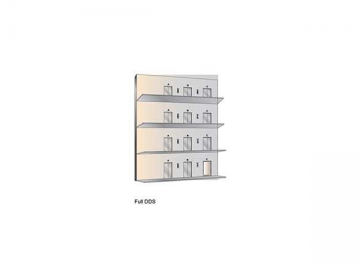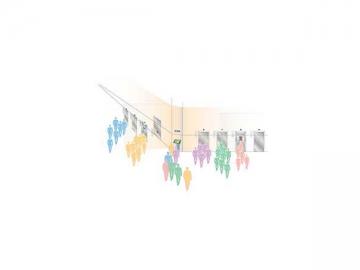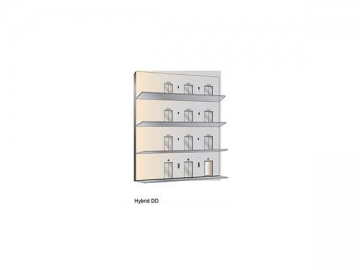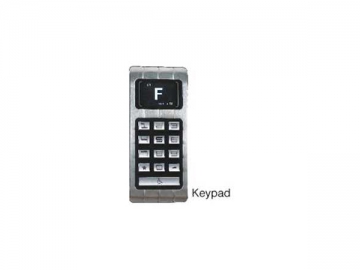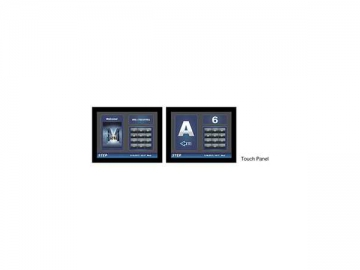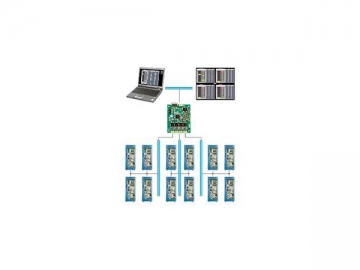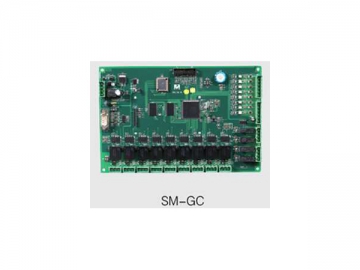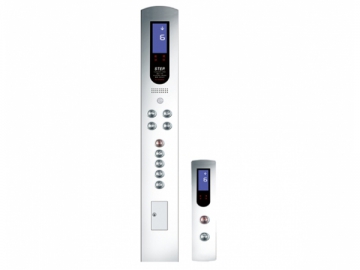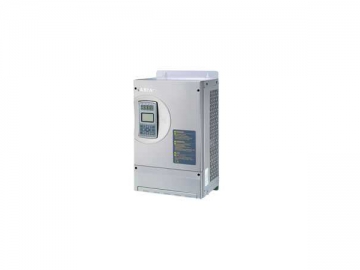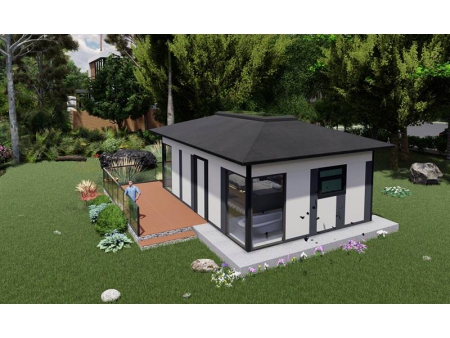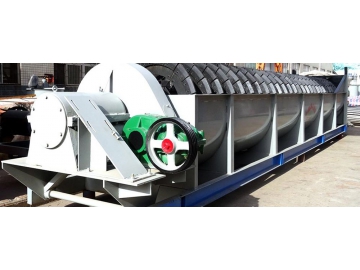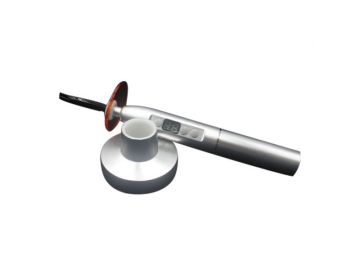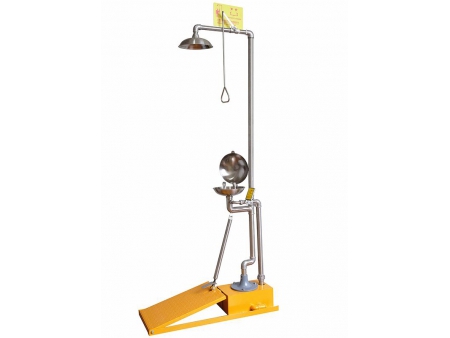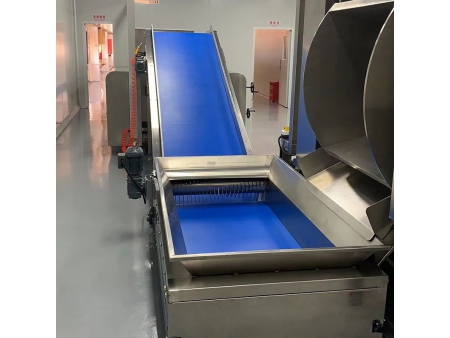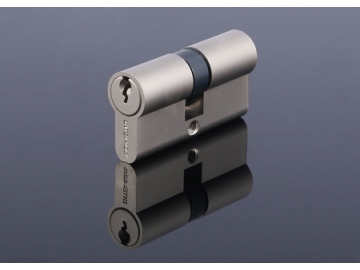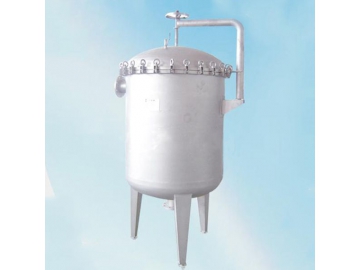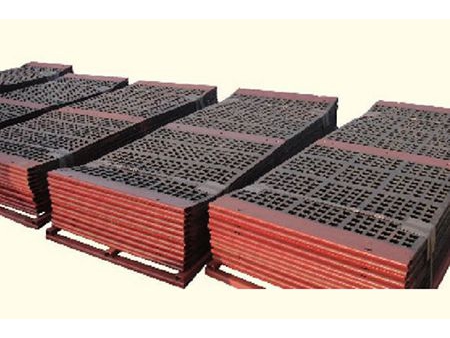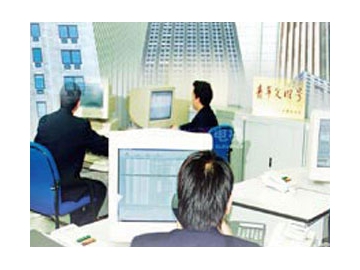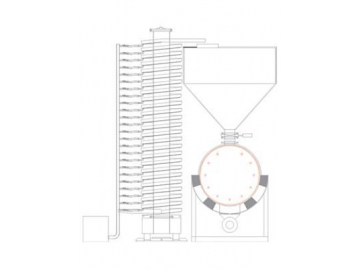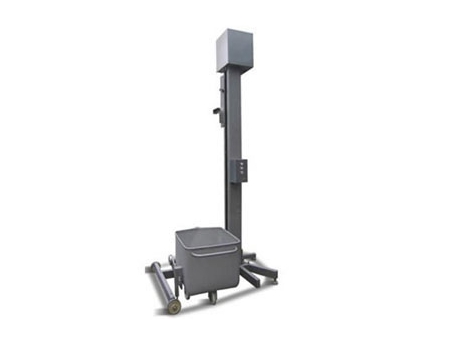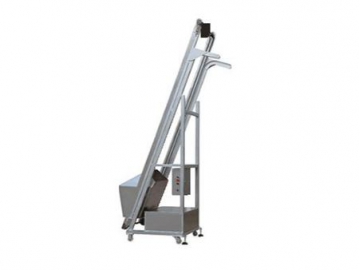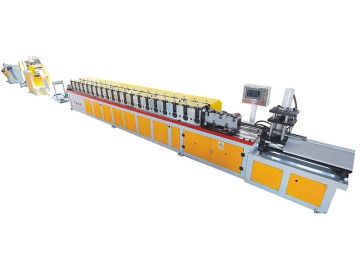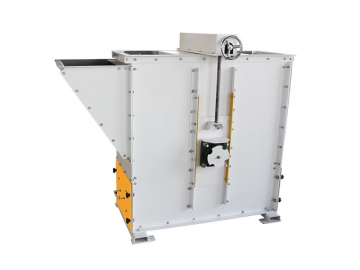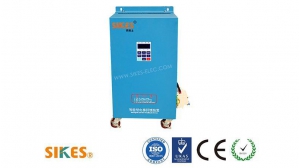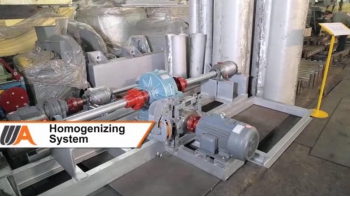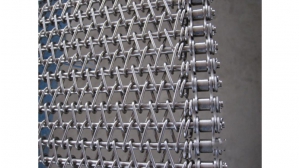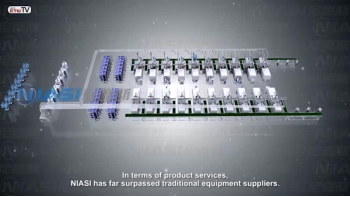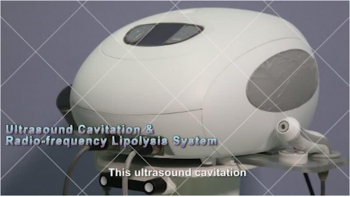Elevator Destination Dispatch System
Elevator Destination Dispatch System
Features
1. Efficient
Adopting various leading-edge technologies such as forecasting system, fuzzy logic, neural network and CAN Bus communication method, our elevator destination dispatch system has high dispatching efficiency.
2. Comfortable
With a destination dispatching system which can guide passengers to the assigned elevator, the average waiting time and long-waiting ratio are reduced avoiding making the lobby crowded. Therefore, people may feel more comfortable when waiting for elevators.
3. Cost-Saving
With higher dispatching efficiency, this scheduling system reduces the elevator deployment in a group for the same traffic capacity requirement. In this way, elevator running cost is reduced.
4. Energy-Saving
An effective destination allocation system make for fewer unnecessary stops of the elevators, thus it helps reduce energy consumption in the building.
Configuration
Our elevator destination dispatch system supports both hybrid and full DDS.
1. Hybrid DDS
I. Destination operating panel is installed on the main entrance floor or other floors.
II. Conventional landing call stations are located on the other floors.
2. Full DDS
Destination operating panels are at each landing stations.
This elevator destination scheduling system also supports various types of destination selectors and destination indicators.
Optional Types of Destination Selector: Touch-panel/keypad/IC reader/button
Optional Types of Destination Indicator: Car/landing, vertical/horizontal, dot-matrix LED/LCD
Functions of Elevator Destination Dispatch System
1. Services Under Up Peak Mode
I. Trigger Method
a. The up peak mode can be set according to time. You can set each day's initial time and end time for up peak mode within a week.
b. The up peak mode is also able to be triggered by a switch. The elevator will enter up peak mode after the up peak service switch is on under any condition.
c. Up peak mode will be intelligently identified when all elevators in a group are running and quantity of registered floor call departing from the lobby exceeds the preset value.
II. Running Services
When entering up peak mode, all elevators that involved in peak time service return to the lobby to wait until this service is completed.
a. Peak time partition service: The service zone that each elevator in a group serves (up half area, down half area, whole area) can be set by parameters.
b. Peak time even/odd-numbered floor service: Through controlling parameters, you can set even or odd-numbered floors that each elevator in group serves.
c. Peak time up collective selection: You can set each elevator in a group to up collective selection via parameters.
d. Intelligent division service: Our elevator destination dispatch system is able to allocate the service zone of each elevator dynamically based on floor layout of the building and the quantity of elevators involved in group control.
e. Non-service floor setting: Non-service floor during up peak time can be set by parameters.
Note: The above a, b, c and d services are only effective when elevators are involved in peak time service mode. You can activate one or several services among a, b and c via parameters. The a, b and c services will become unavailable when the d service is activated.
III. Exit Method
a. Set by time. The elevator will exit the up peak mode after it exceeds the preset time.
b. Triggered by switch. After the up peak service has been canceled, the elevator will exit up peak mode.
c. Up peak can be identified intelligently. If the up peak conditions are not satisfied within 3 minutes, the elevator will exit up peak mode automatically.
Our elevator destination dispatch system can achieve functions similar to those under the up peak mode when the elevator is under the down peak mode, lunch peak mode, and noon peak. Meanwhile, the down peak mode, lunch peak mode, and noon peak mode of the elevator enjoy similar trigger methods, running services and exit methods to that of the up peak mode.
2. Peak Time Automatic Identification under Idle Mode
During non-peak time segment, the elevator can enter peak time mode automatically based on the volume of passengers in the building. The elevators can enter up peak or down peak service mode only when the intelligent division mode is activated.
3. Idle Mode Function
Through our elevator destination dispatch system, you can set the initial time and end time of the idle mode of elevators. When entering the idle time mode, all elevators in a group will return to the lobby to wait. Elevators involved in idle running mode can continue servicing while other elevators stop servicing in the lobby. The idle mode is unavailable when the peak time mode is activated.
4. Energy Saving Mode Function
The energy saving mode can be activated through parameters to allocate passengers as many as possible to each elevator. When the peak time mode is running, the energy saving mode will become unavailable.
5. Waiting Distribution
With our elevator destination dispatch system, three base stations can be set via parameters. The first base station is the hall floor, the second base station is the top station (not have to be the top floor of the building), while the third base station is the dinning room floor. Quantity of the elevators in waiting status on the first floor can be set by parameters too.
Under the mode of returning to the base floor, if all the elevators in group stop running for a period of time longer than the given time, our elevator destination scheduling system will start the group control function which can allocate elevators in group to return to the base floor in turn. If there is any destination call or hall call being registered during the returning process, the elevator will exit from the base station automatically.
Priorities of base station: First station>second station>third station. After elevator returning has been completed, the idle elevator, if there is one, will wait on a floor among the base floors randomly.
6. Service for the Disabled
Our elevator destination dispatch system allows elevators in a group to be set to serve the disabled. After a disabled destination call has been registered, the destination control system will only allocate this destination floor call to elevators for the disabled. As to the destination selector, when a disabled destination call is being registered, button delay will be enlarged automatically, together with a voice indication.
7. Immediate Forecasting
When passengers register a destination floor call or hall call command, the dispatched elevator will be indicated to the passengers.
8. Anti-Nuisance
If several destination calls have been registered on the same floor, when the elevator arrives at this floor, the safety light curtain doesn't act within the given time, then destination calls registered on this floor will be canceled.
9.Car Call Disable
This function can be set by parameters to control if car calls can be registered or not in each elevator of the group.
Features
1. Efficient
Adopting various leading-edge technologies such as forecasting system, fuzzy logic, neural network and CAN Bus communication method, our elevator destination dispatch system has high dispatching efficiency.
2. Comfortable
With a destination dispatching system which can guide passengers to the assigned elevator, the average waiting time and long-waiting ratio are reduced avoiding making the lobby crowded. Therefore, people may feel more comfortable when waiting for elevators.
3. Cost-Saving
With higher dispatching efficiency, this scheduling system reduces the elevator deployment in a group for the same traffic capacity requirement. In this way, elevator running cost is reduced.
4. Energy-Saving
An effective destination allocation system make for fewer unnecessary stops of the elevators, thus it helps reduce energy consumption in the building.
Configuration
Our elevator destination dispatch system supports both hybrid and full DDS.
1. Hybrid DDS
I. Destination operating panel is installed on the main entrance floor or other floors.
II. Conventional landing call stations are located on the other floors.
2. Full DDS
Destination operating panels are at each landing stations.
This elevator destination scheduling system also supports various types of destination selectors and destination indicators.
Optional Types of Destination Selector: Touch-panel/keypad/IC reader/button
Optional Types of Destination Indicator: Car/landing, vertical/horizontal, dot-matrix LED/LCD
Functions of Elevator Destination Dispatch System
1. Services Under Up Peak Mode
I. Trigger Method
a. The up peak mode can be set according to time. You can set each day's initial time and end time for up peak mode within a week.
b. The up peak mode is also able to be triggered by a switch. The elevator will enter up peak mode after the up peak service switch is on under any condition.
c. Up peak mode will be intelligently identified when all elevators in a group are running and quantity of registered floor call departing from the lobby exceeds the preset value.
II. Running Services
When entering up peak mode, all elevators that involved in peak time service return to the lobby to wait until this service is completed.
a. Peak time partition service: The service zone that each elevator in a group serves (up half area, down half area, whole area) can be set by parameters.
b. Peak time even/odd-numbered floor service: Through controlling parameters, you can set even or odd-numbered floors that each elevator in group serves.
c. Peak time up collective selection: You can set each elevator in a group to up collective selection via parameters.
d. Intelligent division service: Our elevator destination dispatch system is able to allocate the service zone of each elevator dynamically based on floor layout of the building and the quantity of elevators involved in group control.
e. Non-service floor setting: Non-service floor during up peak time can be set by parameters.
Note: The above a, b, c and d services are only effective when elevators are involved in peak time service mode. You can activate one or several services among a, b and c via parameters. The a, b and c services will become unavailable when the d service is activated.
III. Exit Method
a. Set by time. The elevator will exit the up peak mode after it exceeds the preset time.
b. Triggered by switch. After the up peak service has been canceled, the elevator will exit up peak mode.
c. Up peak can be identified intelligently. If the up peak conditions are not satisfied within 3 minutes, the elevator will exit up peak mode automatically.
Our elevator destination dispatch system can achieve functions similar to those under the up peak mode when the elevator is under the down peak mode, lunch peak mode, and noon peak. Meanwhile, the down peak mode, lunch peak mode, and noon peak mode of the elevator enjoy similar trigger methods, running services and exit methods to that of the up peak mode.
2. Peak Time Automatic Identification under Idle Mode
During non-peak time segment, the elevator can enter peak time mode automatically based on the volume of passengers in the building. The elevators can enter up peak or down peak service mode only when the intelligent division mode is activated.
3. Idle Mode Function
Through our elevator destination dispatch system, you can set the initial time and end time of the idle mode of elevators. When entering the idle time mode, all elevators in a group will return to the lobby to wait. Elevators involved in idle running mode can continue servicing while other elevators stop servicing in the lobby. The idle mode is unavailable when the peak time mode is activated.
4. Energy Saving Mode Function
The energy saving mode can be activated through parameters to allocate passengers as many as possible to each elevator. When the peak time mode is running, the energy saving mode will become unavailable.
5. Waiting Distribution
With our elevator destination dispatch system, three base stations can be set via parameters. The first base station is the hall floor, the second base station is the top station (not have to be the top floor of the building), while the third base station is the dinning room floor. Quantity of the elevators in waiting status on the first floor can be set by parameters too.
Under the mode of returning to the base floor, if all the elevators in group stop running for a period of time longer than the given time, our elevator destination scheduling system will start the group control function which can allocate elevators in group to return to the base floor in turn. If there is any destination call or hall call being registered during the returning process, the elevator will exit from the base station automatically.
Priorities of base station: First station>second station>third station. After elevator returning has been completed, the idle elevator, if there is one, will wait on a floor among the base floors randomly.
6. Service for the Disabled
Our elevator destination dispatch system allows elevators in a group to be set to serve the disabled. After a disabled destination call has been registered, the destination control system will only allocate this destination floor call to elevators for the disabled. As to the destination selector, when a disabled destination call is being registered, button delay will be enlarged automatically, together with a voice indication.
7. Immediate Forecasting
When passengers register a destination floor call or hall call command, the dispatched elevator will be indicated to the passengers.
8. Anti-Nuisance
If several destination calls have been registered on the same floor, when the elevator arrives at this floor, the safety light curtain doesn't act within the given time, then destination calls registered on this floor will be canceled.
9.Car Call Disable
This function can be set by parameters to control if car calls can be registered or not in each elevator of the group.
Related products
Send Message
Most Recent
More
Other Products
Videos

